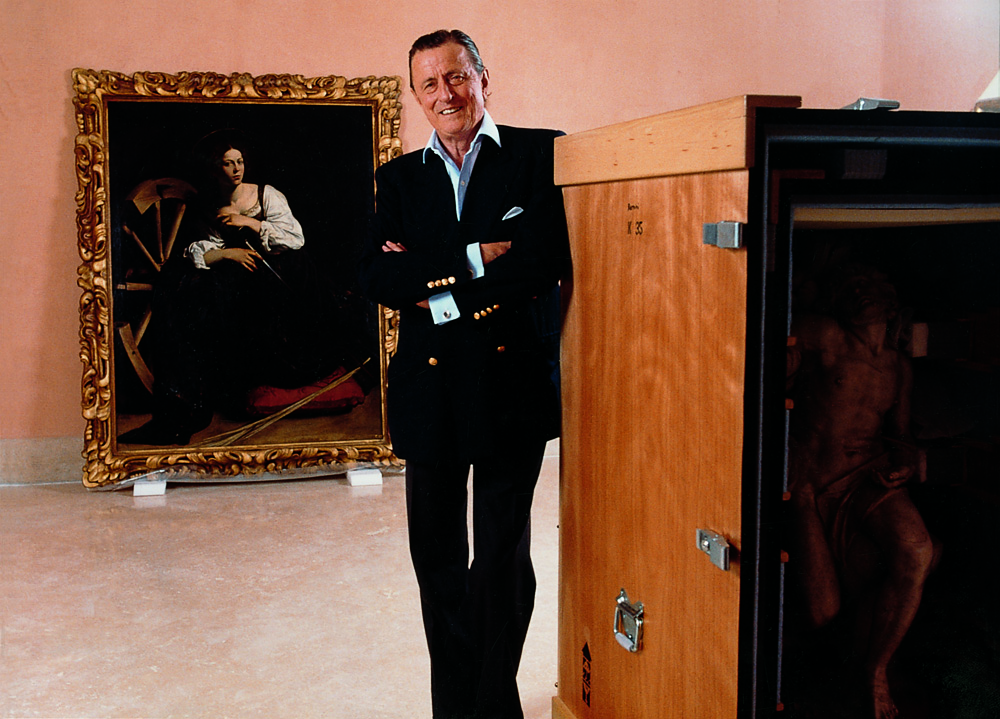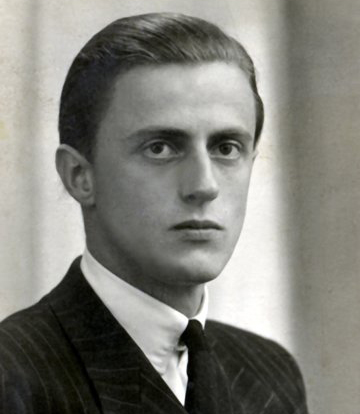History of the Collection II
Hans Heinrich (1921−2002): a passion for art
When Heinrich died in 1947, most of his art collection and fortune went to his youngest son.
Besides relaunching the family businesses affected by the recent war, Hans Heinrich opened the Villa Favorita gallery to the public and set about fully rebuilding his father’s collection by buying back paintings put up for auction by his siblings.
With Heinemann’s help, he also began acquiring old masters, always guided by his father’s tastes.
However, new trends in collecting in the late 1950s, the example set by friends such as Stavros Niarchos and David Rockefeller, and the desire to leave his personal mark on the family collection spurred him to make his first forays into modern art in 1961. That year he acquired, among other pieces, works by Heckel, Kirchner, Pechstein, Nolde, and Schmidt-Rottluff, mostly from dealer Roman Norbert Ketterer. His attraction to German Expressionism soon extended to twentieth-century avant-garde trends and other art movements up until the 1980s.
Auction at the Stuttgarter Kunskabinet, owned by Ketterer, 1959
Meanwhile, the gallery at Villa Favorita continued to house a collection of old masters which had grown progressively over the years. The baron organised international exhibitions of his collection of modern art, which by then spanned from Impressionism to Pop Art, to make up for the fact that it was not on public display at Villa Favorita. In 1979 he also staged shows of classic masterpieces in the main cities of Europe, the United States, Russia, Australia, and Japan to make the collection more widely known.
The collection also travelled to Spain in two temporary shows in the mid-1980s. The first, devoted to modern masters, was held in 1986 at the Biblioteca Nacional in Madrid and at the Palau de la Virreina in Barcelona. It was followed by an exhibition of old masters at the Real Academia de Bellas Artes de San Fernando in Madrid a year later.
In the 1980s, Hans Heinrich became concerned with ensuring that his collection remained intact. He submitted a proposal to the Swiss authorities to have the gallery at Villa Favorita extended. Failing to obtain the financial support needed to put the project into practice, he began exploring the possibility of a foreign location. He received offers from the United Kingdom, the Getty Foundation, and several German cities, as well as from the Spanish government. The influence of his Spanish wife, Carmen Cervera, was ultimately what led the baron to decide to bring his collection to Spain.

In 1988 the baron and the Spanish state signed a contract for the loan of 775 works from the collection with a view to their subsequent sale. A foundation was set up to manage the collection and Rafael Moneo was commissioned to fully refurbish the former Palacio de Villahermosa to house it. Work on the new museum was completed in 1992.
Arrangements were made for the complex task of moving the paintings from Lugano and installing them in the new galleries under the guidance of the baron and Tomàs Llorens, artistic director of the Museo Thyssen-Bornemisza. The museum opened to the public for the first time in October 1992 and barely eight months later, in June 1993, an agreement was signed whereby the works were sold to the Spanish state for a total of 350 million dollars.
With its broad representation of late-nineteenth and early twentieth-century art movements and other schools of painting practically absent from national collections, the Museo Thyssen-Bornemisza complemented the rich holdings of the Museo Nacional del Prado and the Museo Nacional Centro de Arte Reina Sofía. Its opening in 1992 marked the establishment of an internationally prestigious cluster of museums in the centre of the city.





